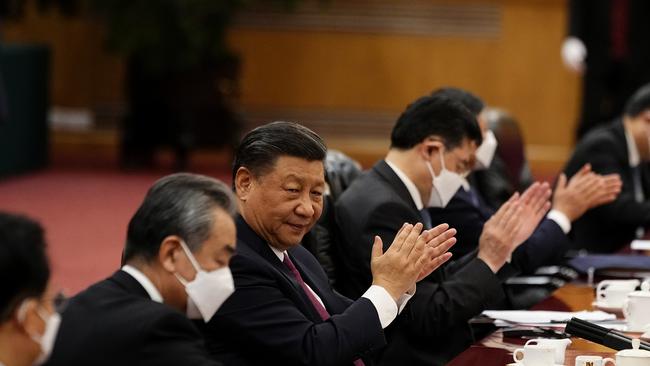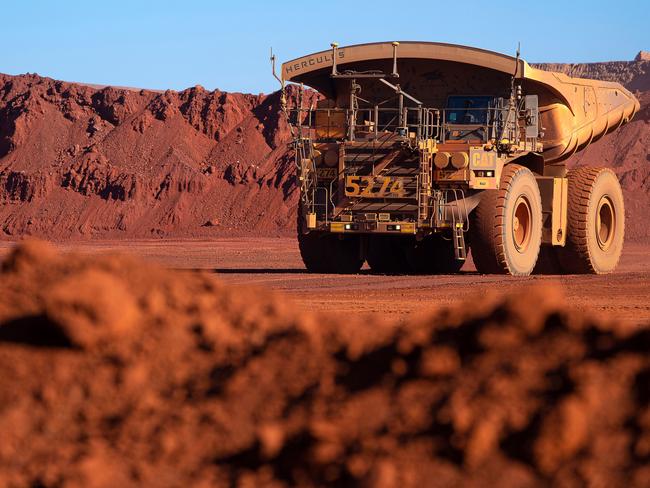
Unusual events are taking place in the iron ore market and when you embrace the famous words of Professor Julius Sumner Miller and ask “why is it so”, no satisfactory answer comes forward.
On the surface all looks normal. Iron ore prices remain at a high level despite recent falls and China is vowing to increase its demand.
The iron ore quandary hit my desk over the weekend after the iron ore price fell some $US7 a tonne to $US108.
The market explanation was that there had been a 19 per cent fall in the Chinese housing starts during the March quarter.
But then you look deeper and find that the steel price has also fallen sharply and the margin to allow the conversion of iron ore to steel has become far too low.
And there is another mystery. The Chinese are buying lower grade hematite iron ore at a premium over the normal cost.
If they are using the conventional blast furnace based process the higher prices being paid for lower grade ores make no sense.
Clearly something is starting to happen in the Chinese iron and steel industry of significance.
We don’t know the details, but we can guess.
Most of the Australian green steel publicity looks at new ways of making steel via the use of hydrogen instead of coking coal or the use of goethite ore bodies that don’t contain asbestos.

Goethite molecules are a combination of iron, hydrogen and oxygen and CSIRO research shows that if goethite is included in the mix of materials used in conventional blast furnaces, less coking coal is required.
The use of hydrogen and/or goethite to replace coal is a longer term goal. Fortescue is a leader in hydrogen but has yet to make a final investment decision. These developments do not impact current trading.
But there is a second area of research in Australia where the Chinese might have moved ahead of us. Most iron ore contains rare earths, copper, nickel, gold and silver – but the amounts are usually relatively small and iron ore miners have simply ignored them and the valuable metals are tossed into the steel making process.
In Perth, Fortescue has a mystery laboratory which appears to be examining the economics of extracting these minerals from the ore almost leaving a form of pig iron as a by-product.
In Australia for almost 20 years the head of Roy Morgan Research, Gary Morgan, has spent much of the riches created by the opinion polling business to finance the Haoma company in developing the Elazac Process – initially to enable the recovery of gold from Bamboo Creek ores but later extending its application to the direct extraction of other valuable metals from waste dumps and ore bodies.
It has been a slow, expensive and frustrating saga which is now having some success.
More recently Morgan has been attempting use the process to separate the components of iron ore.
It’s possible the Chinese are further ahead and their ability to extract valuable minerals from iron ore enables them to buy cheaper lower grade iron and produce steel at a lower cost. But the Chinese research also extends into the longer term green steel space.
China’s Shougang Group is one of the world’s top 10 steel producers and has signed a memorandum of understanding with London’s Rio Tinto to “promote research, design and implementation of low-carbon solutions for the steel value chain”.
The agreement covers low-carbon sintering technology, blast furnace and basic oxygen furnace optimisation, and carbon capture and utilisation.
Australia’s BHP has always been confident that despite the green steel thrusts, demand for its hematite iron would remain strong because of the Chinese have invested large sums in new blast furnaces that will require BHP’s high grade hematite ore.
On a broader front, in all areas of carbon emissions research from time to time individual corporations and countries will gain significant advantages because they achieve a breakthrough.
Australia needs to find out exactly why the Chinese are paying a higher price than normal for lower grade ores and why the steelmaking margin has gone so low.
Maybe it’s a market aberration but if it’s a technology development we will need to adapt very quickly otherwise riding on the iron ore back will be bumpy.







With coal and gas prices down and the domestic economy heading to a severe downturn, Australia is riding on the back of iron ore – so what happens in the iron ore market has crucial implications for the nation.